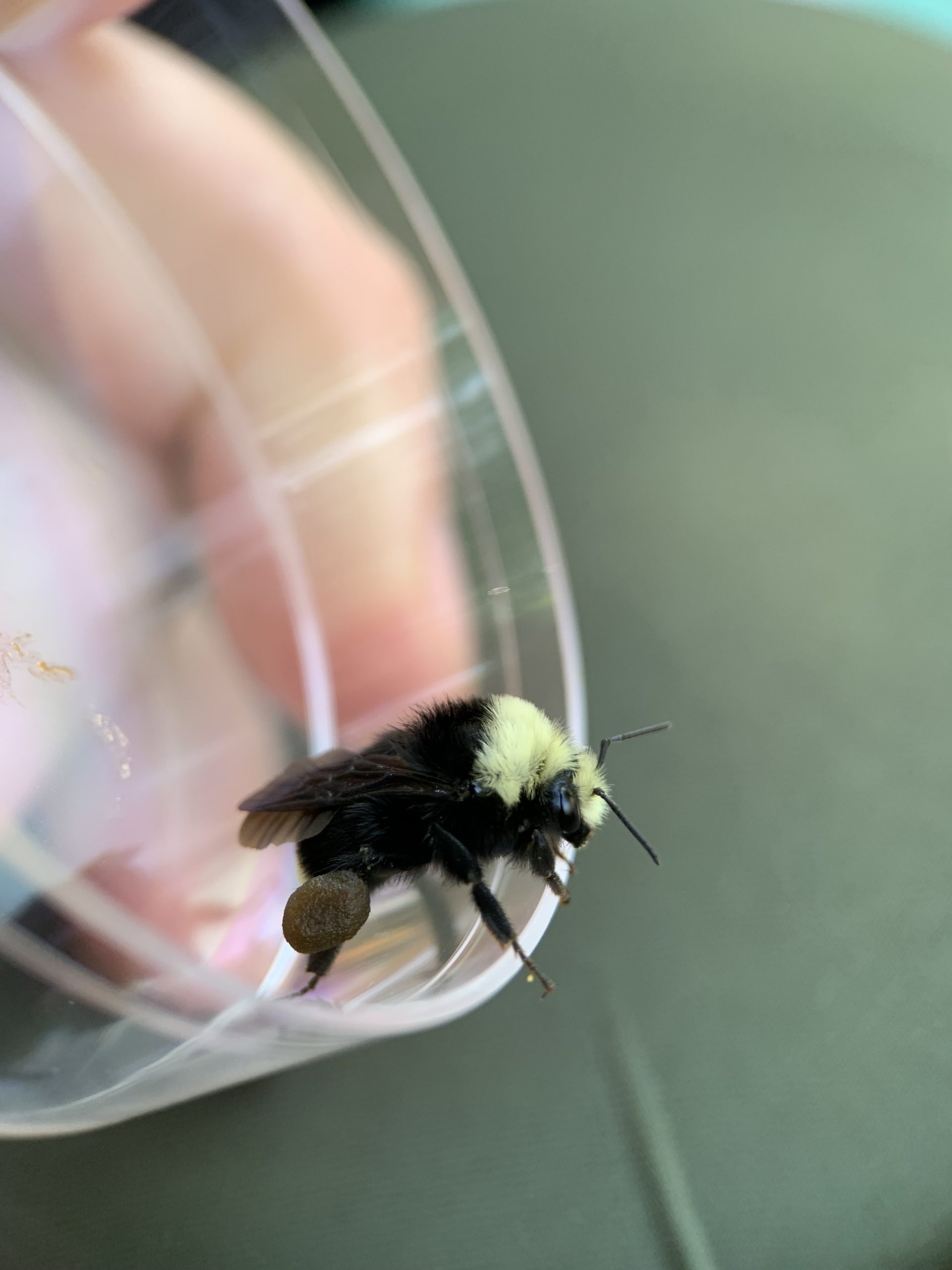BEE Smart
Project lead: Jennifer Lipka
Project BEE Smart will determine: 1) The abundance, diversity, and foraging range of native bumble bees across UBC Botanical Garden and UBC Farm; 2) Preferred host plants of native bumble bee pollinators; 3) The role of native and commercial bee interactions in host plant usage and foraging range; 4) Microclimatic and seasonal weather variables associated with native bumble bee abundance and diversity. Moreover, the goal of the project is to engage with the public in on-site data collection thereby increasing public ownership and awareness of native bumble bee conservation, increase the public’s literacy on the native bumble bees of our region, and provide direct training in citizen science data collection methods. Native bumble bee pollinators are critical for natural ecosystem functioning, however, habitat loss, lack of suitable food plants, interactions with commercial bees, and changing climate all may negatively affect native bumble bee abundance and diversity. Beyond the negative ecosystem implications, declining abundance and diversity of bumble bees is a critical issue for the Agricultural Sector, and specifically, for agriculture in British Columbia. This is because native bumble bees function in pollinating important field- grown BC crops (e.g. blueberries) and also may commonly interact with commercial bees, including honeybees imported into agricultural fields and greenhouse bumble bee pollinators.
This interdisciplinary project will integrate expertise from insect ecology, botany, biometeorology, and citizen science to evaluate urban farm and garden habitat for native bumble bee conservation. This project is in collaboration with the UBC Botanical Garden and Dr. Tara Moreau and Brian Campbell, the Biometeorology LFS Lab and Dr. Andy Black, and the UBC Farm. In addition, this project included community partner West Coast Seeds.


Trace Heavy Metal Bumble bee Project
Project lead: Jennifer Lipka
The goal of this project is to determine how different land-use zones (i.e. urban vs. agricultural) affect the trace metal concentrations in bumble bees. Anthropogenic activities, like automobile traffic and industry, introduce trace metals into the environment. As insect pollinators forage for resources, they interact with their environment, thereby actively and passively collecting trace metals. For a heavy metal like lead (Pb), this is of great concern because of its toxicity and persistence in the soil. Since bumble bees nest in the ground, as opposed to above-ground managed honey bees, it is worth investigating their exposure to trace metals in various land-use settings. As urban growth supersedes valuable habitat and challenges the survival of bumble bees, understanding the landscape dynamics and routes that pollinators are exposed to anthropogenic environmental contaminants will be crucial to their preservation and conservation.
This interdisciplinary research is being carried out in collaboration with Dr. Dominique Weis at the Pacific Centre for Isotopic and Geochemical Research (PCIGR) lab. Furthermore, this research involves two community organizations: Hives for Humanity and Bumble Bee Watch.
PCIGR – https://pcigr.eos.ubc.ca/
Hives for Humanity – https://www.hivesforhumanity.com/
Bumble Bee Watch – https://www.bumblebeewatch.org/
BeeHIVE Research Cluster – https://beehive.ubc.ca/home